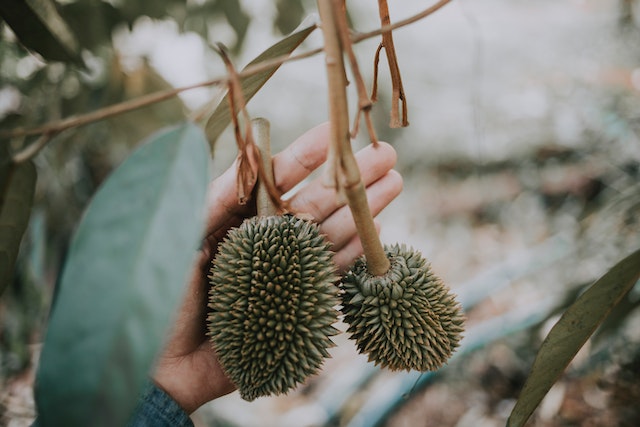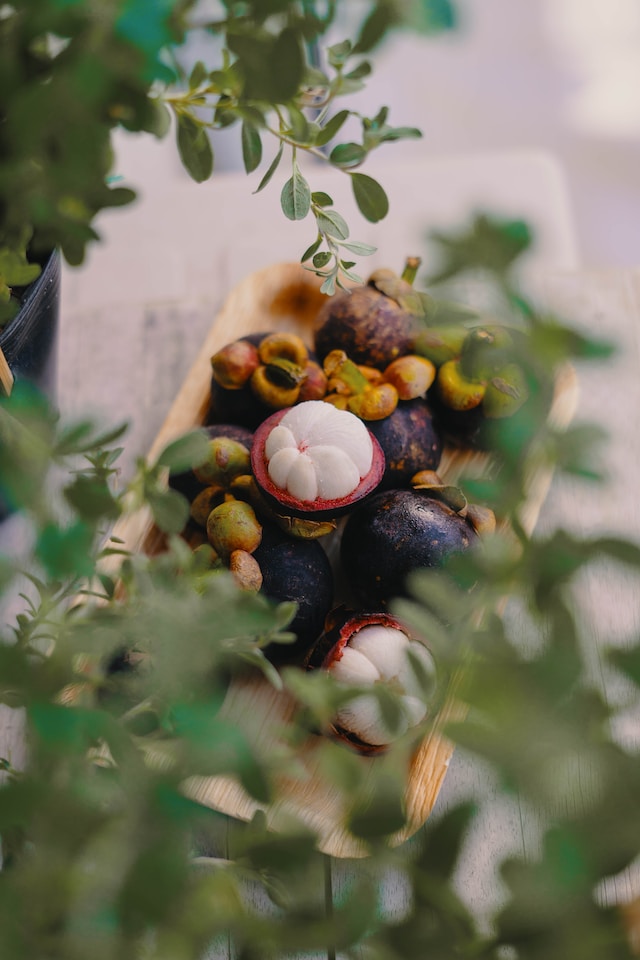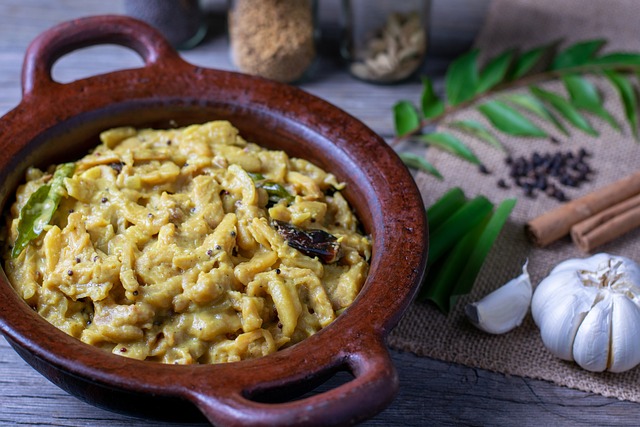
The world of fruits is vast and varied, with countless options to choose from. But there’s something truly special about exotic fruits – fruits that are unusual, rare, or uncommon in a particular region or country. These fruits come in all shapes, sizes, and colors, and often carry unique flavors and textures that can really spice up your palate.
Whether you’re a seasoned foodie looking to expand your repertoire or simply someone looking to experiment with new flavors, this is the perfect place to start. We invite you to join us on a journey of discovery and appreciation for the vast and varied world of exotic fruits.
Benefits of Exploring Exotic Fruits
If you’re someone who loves to explore new flavors and textures, incorporating exotic fruits in your diet can be a great idea. Here are some benefits of exploring exotic fruits:
Nutritional Boost
Exotic fruits are often loaded with valuable nutrients that can provide an array of health benefits. For instance, dragon fruit, which is native to Central and South America, is rich in antioxidants, vitamin C, and fiber. Similarly, kiwano, also known as horned melon, is a good source of vitamin C, potassium, and magnesium. By incorporating exotic fruits in your diet, you can provide your body with a nutritional boost that can improve your overall health.
Culinary Adventure
Exploring exotic fruits can be an exciting culinary adventure. With their unique flavors and textures, exotic fruits can add a new dimension to your cooking and baking exploits. You can use them to make smoothies, juices, jams, desserts, or even savory dishes like salads and stir-fries. By experimenting with exotic fruits, you can unleash your culinary creativity and savor new taste sensations.
Environmental Awareness
Exploring exotic fruits can also raise your awareness about environmental issues. Many exotic fruits come from regions that are facing environmental challenges such as deforestation, drought, or climate change. By learning about the origins of your food, you can develop a greater appreciation for the natural world and the importance of sustainable agriculture. You can also support local farmers who grow exotic fruits and help promote biodiversity and cultural diversity.

Cultural Connection
Exploring exotic fruits can also provide an opportunity to connect with other cultures and traditions. Many exotic fruits have cultural significance and are used in traditional ceremonies, festivals, or rituals. For instance, the durian fruit, which is native to Southeast Asia, is considered a delicacy, but also has a strong odor that can be divisive.
By learning about the cultural contexts of exotic fruits, you can gain a deeper understanding of other peoples and broaden your own cultural horizons.
Healthier Diet
Finally, exploring exotic fruits can help you achieve a healthier diet. By incorporating a variety of fruits and vegetables in your meals, you can reduce your risk of chronic diseases such as heart disease, diabetes, and cancer. Exotic fruits can also add variety to your diet, making it more interesting and satisfying. By focusing on whole, natural foods, you can improve your overall health and well-being.
Exotic Fruits from Around the World
If you’re interested in exploring the world of exotic fruits, there are a plethora of options to choose from. Here’s a list of some of the most unique and interesting fruits from around the world:
Durian – Known as the “king of fruits” in Southeast Asia, durian is a highly divisive fruit. It has a spiky exterior and is known for its strong, pungent odor. Inside the fruit, there’s a soft, creamy flesh that’s rich in healthy fats, fiber, and vitamins B and C. Durian has a sweet, nutty flavor that some people love, while others find it repulsive.
Kiwano – Also called horned melon, this exotic fruit is native to Africa and has a spiky, orange exterior. Inside, there’s a jelly-like green flesh that’s dotted with tiny seeds. Kiwano has a sweet-tart flavor and is a good source of vitamin C, potassium, and magnesium.
Rambutan – This small, hairy fruit comes from Southeast Asia and is similar in appearance to a lychee. It has a red or yellow exterior that’s covered in soft, hair-like spines. Inside, there’s a translucent white flesh that’s sweet and juicy. Rambutan is a good source of vitamin C, iron, and calcium.
Mangosteen – Hailing from Southeast Asia, mangosteen has a hard, purplish exterior and a sweet, white flesh that’s divided into segments. It’s rich in antioxidants and has been used in traditional medicine to treat a variety of ailments.
Jabuticaba – This Brazilian fruit looks like a small grape and grows directly on the trunk and branches of the tree. It has a deep purple exterior and a translucent white flesh. Jabuticaba is a good source of vitamin C and antioxidants.
Cherimoya – Also called custard apple, this fruit is native to Peru and has a green or brown exterior that’s covered in knobby protrusions. Inside, there’s a soft, creamy white flesh that’s sweet and fragrant. Cherimoya is a good source of vitamin C, potassium, and fiber.
Dragon Fruit – Also known as pitaya, this exotic fruit originates from Central and South America. It’s oblong in shape, with a pink or yellow outer skin that’s covered in green scales. Inside the fruit, there’s a soft, white flesh that’s dotted with tiny black seeds. Dragon fruit has a sweet, mild flavor and is packed with antioxidants, vitamin C, and fiber.

Tamarillo – Also known as tree tomato, this fruit is native to South America and has an oblong shape. It has a red or yellow exterior that’s slightly sour and inside, there’s a juicy red or yellow flesh. Tamarillo is a good source of vitamin C, fiber, and antioxidants.
Acai – This small, dark purple berry is native to Brazil and is often used in smoothie bowls and juices. It’s rich in antioxidants, fiber, and healthy fats.
Exploring exotic fruits from around the world can be a fun, exciting, and nutritious way to expand your culinary horizons. By trying new fruits, you can discover unique flavors, textures, and nutritional benefits that can enhance your overall health and well-being.
Culinary Uses of Exotic Fruits
Exotic fruits can add a unique flavor, texture, and color to a range of culinary dishes, from smoothies and salads to desserts and sauces. Here are some exciting ways to use exotic fruits as ingredients in your cooking and baking exploits:
Smoothies and Juices
Exotic fruits are perfect for making healthy smoothies and juices that pack a punch in terms of flavor and nutrition. For example, dragon fruit, mango, papaya, and kiwi can make a delicious tropical smoothie, while acai, blueberries, and strawberries can form the base for an antioxidant-rich smoothie.
Salads
Adding exotic fruits to your salads can add a refreshing twist to mundane greens. Try adding slices of sliced mango, juicy peaches, kiwano, or even pomegranate seeds to your salad for a sweet and tangy flavor.
Desserts
Exotic fruits are perfect for making unique and tasty desserts. For example, mangoes can be used to make a creamy mango mousse or a refreshing sorbet, while passionfruit can form the base for a tangy curd or a tropical pavlova topping.
Sauces and Salsas
Exotic fruits can add a sweet and spicy kick to salsas and sauces. For example, pineapple or mango salsa can be paired with grilled chicken or fish, while a spicy mango chutney can be added to curries or rice bowls.
Snacks
Exotic fruits can make a great snack on their own or paired with cheese or crackers. For example, sliced dragon fruit or kiwano can make a fun and colorful snack, while durian can be paired with a mild cheese for a sweet and savory flavor.

In addition to these culinary uses, there are many other ways to incorporate exotic fruits in your meals. For example, using rambutan or lychee as a garnish can add a visually appealing element to any dish, while adding a scoop of acai to your morning oatmeal can add an antioxidant boost to your breakfast routine.
Overall, exploring the culinary possibilities of exotic fruits can be a fun and delicious way to expand your culinary horizons and enhance your overall health and well-being.
Tips for Selecting and Ripening Exotic Fruits
Exploring the world of exotic fruits can be a fun and exciting adventure, but it can also be intimidating if you’re not familiar with how to select and ripen these unique and often unfamiliar fruits. Here are some tips to help you choose the best exotic fruits and get them ready to eat:
Check for ripeness: One of the biggest mistakes people make when selecting exotic fruits is not checking for ripeness. Unlike some common fruits like bananas or apples that are easy to judge based on color and firmness, exotic fruits can be a bit trickier. Look for signs of ripeness specific to the fruit you’re buying. For example, a ripe kiwano will have a bright orange color and will give slightly when gently squeezed, while a ripe mango should have a fragrant aroma and feel slightly soft to the touch.
Look for bruising and damage: When selecting any fruit, look for signs of bruising, mold, or other damage. While some exotic fruits may have tougher outer skins or spines that protect the flesh, others may be more delicate. Check the fruit for any soft spots or discoloration, which may indicate that it’s overripe or has been damaged.
Consider the season: Exotic fruits, just like more common fruits, have seasons when they’re most easily available and at their best. Research the seasons for the fruits you’re interested in or ask your local grocer or farmer’s market vendor for advice on when to buy.
Plan ahead: Exotic fruits may take longer to ripen than you’re used to, so it’s important to plan ahead if you want them to be ready for a certain meal or event. For example, a durian fruit may take up to a week to ripen at room temperature, while a mango may take a few days.
Know how to ripen: If you’ve purchased an exotic fruit that’s not quite ripe, there are a few methods you can use to help it along. Some fruits can be left out at room temperature to ripen, while others benefit from being placed in a paper bag with an apple or banana, which releases ethylene gas that can speed up the ripening process.
Store properly: Once your exotic fruits are ripe, store them in the refrigerator or at room temperature, depending on the fruit. Some fruits, like cherimoya, are best eaten immediately once ripe, while others, like pitahaya, can be stored in the refrigerator for a few days.

Safety Precautions and Handling Exotic Fruits
Exploring exotic fruits can be an exciting adventure, but it’s important to keep safety precautions in mind when handling these unique fruits. Here are some safety tips to keep in mind:
Wear gloves when handling prickly or spiky fruits
Some exotic fruits, such as durian or rambutan, have a spiky or prickly exterior that can be difficult to handle. Wear gloves when handling these fruits to avoid getting pricked or scratched.
Wash your hands and the fruit thoroughly before consuming
Just like any other fruit, it’s important to wash your hands and the fruit thoroughly before consuming. This can help remove any residual dirt, bacteria, or pesticides that may be present on the surface of the fruit.
Avoid eating unripe or overripe fruits
Some exotic fruits, such as ackee or cherimoya, can be poisonous if eaten when unripe or overripe. Make sure to research the appropriate ripeness level for the fruit you’re interested in and avoid consuming it if it’s not at the right stage.
Learn how to properly cut and prepare the fruit

Some exotic fruits, such as jackfruit or passionfruit, can be difficult to cut and prepare if you’re not familiar with them. Learn how to properly cut and prepare the fruit to avoid injury or damage to the fruit.
Store the fruit properly
Exotic fruits may have different storage requirements depending on the fruit. Some fruits, such as mangos or papayas, can be stored at room temperature until ripe, while others, such as mangosteen or dragon fruit, should be stored in the refrigerator. Consult a guide or talk to your local grocer to determine the appropriate storage for the fruit you’re interested in.
Exploring exotic fruits can open up a world of new tastes, textures, and health benefits. These unique fruits not only add to the culinary experience but also offer a glimpse into different cultures and traditions. By following some simple tips and safety precautions, you can safely and creatively incorporate exotic fruits into your meals and snacks. So why not embark on a tasty adventure and explore the world of exotic fruits today?
